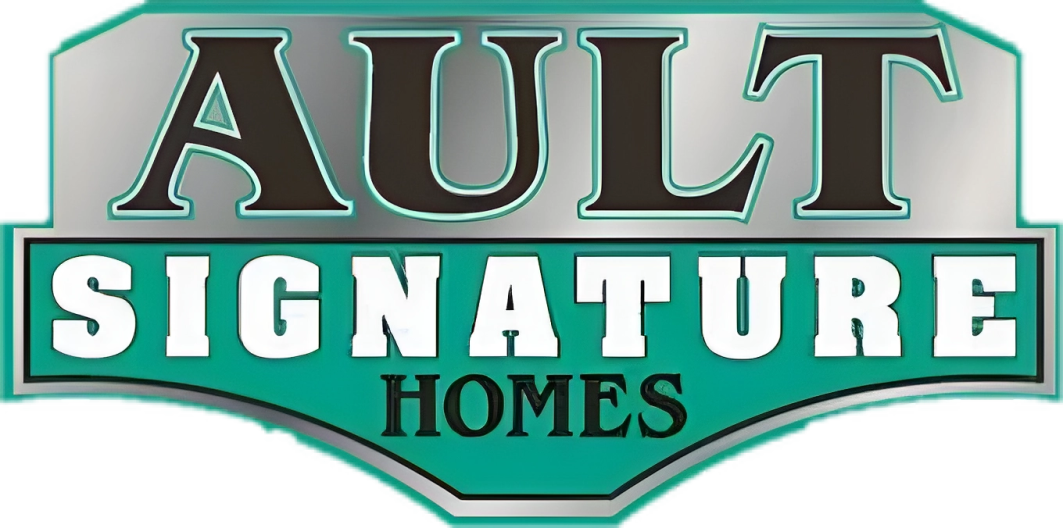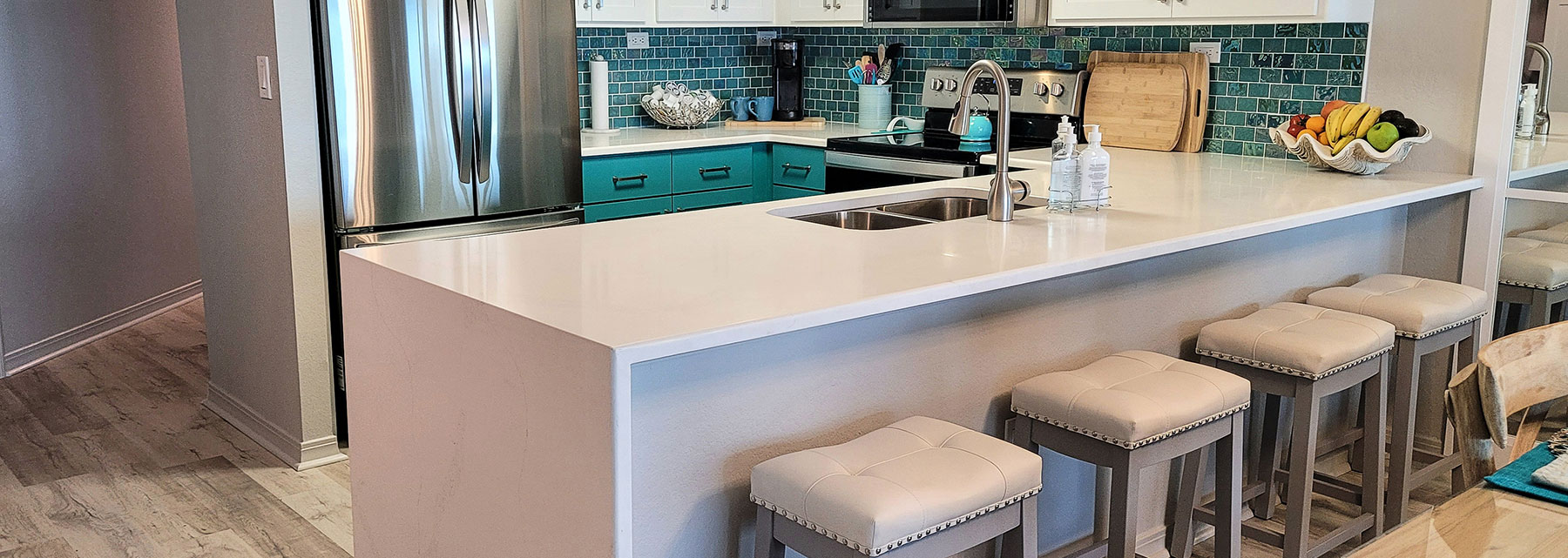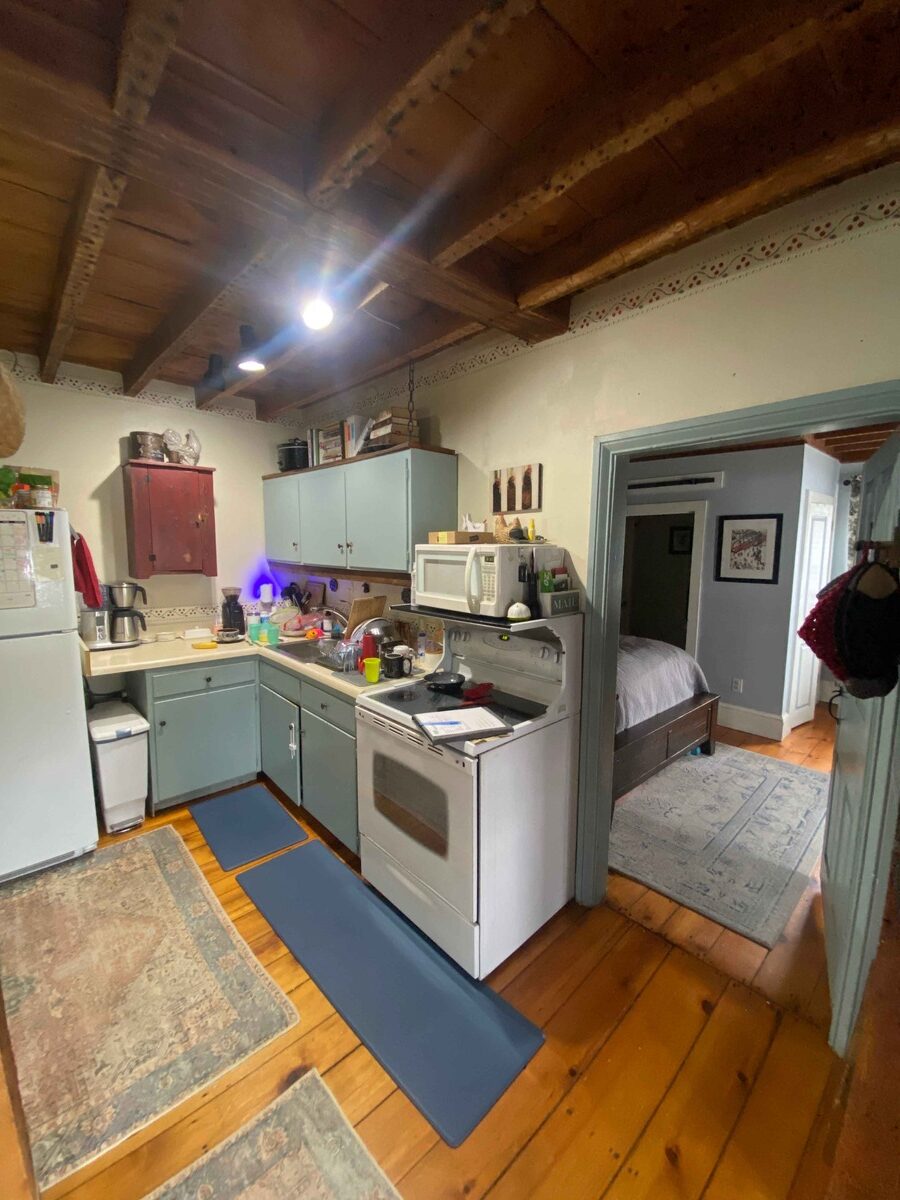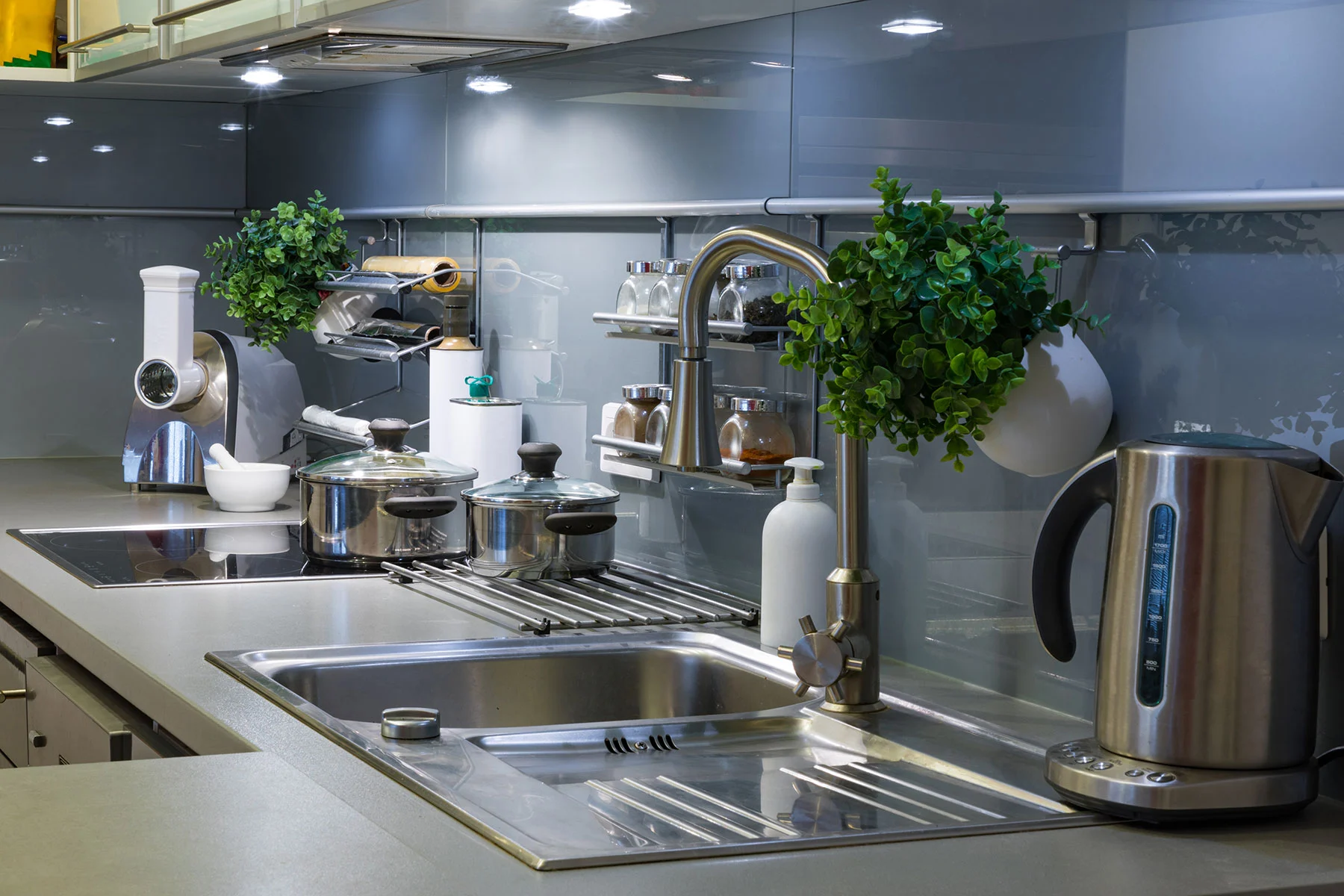It’s no secret that smart home features have shifted from “nice-to-have” to “must-have” in 2025. With tech-savvy buyers and renters expecting convenience, energy savings, and easy-to-control security, smart systems play a big role in what today’s homes are worth. Properties with integrated smart thermostats, advanced security cameras, and AI-powered lighting don’t just attract more interest—they regularly sell for higher prices, sometimes up to 5% more than similar homes without these features.
For homeowners and investors, tech upgrades aren’t just a passing trend. They help future-proof a property and make sure it stands out in a crowded market. If you want to boost your home’s value and appeal fast, adding the right smart devices and systems is one of the smartest moves you can make this year.
The Impact of Smart Home Technology on Property Value
 Photo by Kindel Media
Photo by Kindel Media
Smart home technology isn’t just about gadgets or convenience anymore—it’s a big deal for home values in 2025. With more buyers expecting tech-driven living, smart features aren’t just a bonus, they’re a selling point that can boost your property’s worth and help you stand out when it’s time to sell. Whether you own, rent, or invest, knowing the numbers behind smart home upgrades is key to making smart choices for your property.
Return on Investment: How Much Value Do Smart Features Add?
Adding smart technology pays off in several ways:
- Higher Resale Value: Homes with modern smart security, thermostats, and lighting generally sell for 3% to 5% more than similar houses without these upgrades.
- Reduced Days on Market: Smart homes attract buyers fast, selling up to 40% quicker in busy markets.
- Savings Add Up: Smart thermostats and lighting systems cut energy bills, so buyers factor lower utility costs into what they’re willing to pay.
- Better Tenant Retention: Smart features in rentals can increase lease renewals by around 18%, helping owners keep good tenants longer.
ROI can differ based on what you install. Some features, like smart thermostats and keyless locks, cost less than $1,000 to add but can bring real returns when it’s time to sell. In cities like Austin or San Francisco, AI-connected homes can see value bumps of 7% to 10%.
What’s Driving Higher Demand in 2025?
The appetite for smart homes is booming and shows no sign of slowing down:
- The global smart home market is expected to triple over the next decade, reaching more than $1 trillion by 2034.
- Over 67% of US households will have some kind of smart device by 2027.
- Top reasons for this surge include increasing options for energy savings, better security, and easier daily routines.
Smart security and connected climate control still hold the biggest share of buyer interest, but kitchen appliances and home health tech are gaining serious traction.
Why Are Buyers Prioritizing Smart Features?
Today’s buyers are motivated by more than just cool tech:
- Convenience is king. Automated lighting, voice assistants, and remote climate control make daily life easier.
- Cost savings from energy-efficient devices help with long-term budgeting.
- Security matters more than ever, with smart locks, video doorbells, and cameras topping wish lists.
- Future-proofing gives peace of mind that the home won’t be outdated next year or the year after.
- Green living: Many buyers want homes that help them use less energy and lower their carbon footprint.
People shopping for homes in 2025 don’t just want space—they want a place that makes life smoother, safer, and more efficient. That’s why smart home features are moving from luxury to necessity, especially in growing markets and among Millennial buyers.
Key Takeaways for 2025
- Homes with smart features sell faster and for more, with ROI up to 30% for some investments.
- Market demand is rising, as most buyers now expect connected living as a basic standard.
- Buyers want features that save money, add convenience, and provide peace of mind—so simple, integrated tech remains top priority.
Adding even a few smart upgrades to your property isn’t just about keeping up; these tech moves help lock in a stronger resale value and keep your home in high demand for years to come.
Energy Efficiency and Sustainability: Essential Smart Upgrades
Buyers are no longer just searching for comfort and convenience—eco-friendly smart features can supercharge your home’s appeal and lower the long-term cost of ownership. Homes that prioritize energy efficiency, on-site solar generation, and adaptive smart appliances catch the eye of future-focused buyers and renters. Let’s explore the key upgrades that drive value, shrink utility bills, and tap into incentives you don’t want to miss.
Smart Thermostats and Automated HVAC Systems: More Comfort, Less Cost
 Photo by Jakub Zerdzicki
Photo by Jakub Zerdzicki
Smart thermostats take climate control up a notch. Instead of basic schedules, these devices learn patterns, adjust for daily activities, and use sensors to heat and cool only the rooms you need. The top names leading the way in 2025 include:
- Ecobee Smart Thermostat Premium: Uses AI and multiple room sensors to balance temp throughout the house, saving up to 26% on heating and cooling.
- Google Nest Learning Thermostat: Adapts to your routine in a few days, fine-tunes settings based on weather, and works seamlessly with smart speakers and home systems.
- Breeze Max and others: Offer remote lock controls and zoned networking, making them a hit for both standard and ductless HVAC units.
Smart thermostats now feature air quality sensors, built-in voice assistants (Alexa, Siri, and Google), and integration with platforms like Matter and Apple HomeKit. Energy Star–certified models qualify for rebates, dropping the cost as low as $1 through utility company offers in some areas.
Main benefits:
- Smoother comfort and fewer hot or cold spots
- Remote control via smartphone or voice
- Lower bills with savings between 8–26%
- Easier installation, often DIY-friendly
- Many models qualify for rebates or local incentives
Adaptive learning, geofencing, and hands-off controls make these systems easy for anyone. Smart thermostats quickly add value to any home and are highly visible to buyers and appraisers.
Solar Panels and Integrated Home Batteries: On-Site Power That Pays
Solar isn’t just for futurists, it’s for anyone who wants to take control of rising energy costs and boost a home’s green credentials. Prices for solar panels have dropped by nearly 60% in the last decade, averaging about $24,000–$36,000 for a full residential setup before incentives. Add in a home battery like the Tesla Powerwall 3 or Franklin aPower2 and you get instant backup when the grid goes down, plus the chance to use more of your own clean power, day or night.
Top advantages of solar and battery integration:
- Cuts utility bills: Once installed, solar can offset over 80% of your household’s annual electricity needs.
- Increases home value: Multiple studies show homes with solar sell faster and for 4–6% more.
- Provides backup power: Top batteries supply reliable energy during outages, running essentials for hours or longer.
- Qualifies for incentives: Federal tax credits, state rebates, and utility programs can cut costs by 30% or more.
- Improves sustainability: Solar and batteries drop your carbon footprint while future-proofing against volatile energy prices.
Today’s leading solar panels use monocrystalline silicon for the best efficiency in tight spaces. Reliable home batteries cost between $10,000–$19,000 (pre-incentive) and store extra power even after the sun sets, keeping appliances running and giving peace of mind.
Energy-Efficient Smart Appliances: Smarter Use, Stronger Value
Think of smart refrigerators, dishwashers, and laundry machines as silent partners in your push for lower bills and less waste. Modern appliances now automatically adjust cycles based on load, detect leaks before they cause big problems, and run during off-peak hours when energy is cheaper. Many also report maintenance needs or suggest ways to save even more.
What sets the best smart appliances apart?
- Refrigerators: Feature internal cameras, temperature mapping, and quick-cool tech to keep food fresher with less energy.
- Dishwashers: Use soil sensors to adjust water and cycle length, often cutting waste by up to 40%.
- Washers/Dryers: Sync cycles to avoid wasted energy, let you start loads remotely, and auto-dispense detergent so you never use too much.
Look for the Energy Star label; it signals strong performance and lower running costs. Many models now link with smart thermostats, solar systems, and batteries to optimize energy use during the cheapest times. As utilities adopt real-time rate programs, smart appliances put you in the driver’s seat to save.
In summary:
- Lower running costs mean immediate savings and ongoing value
- Maintenance alerts prevent expensive repairs and prolong appliance life
- Programmable and connected controls boost appeal and appraised value
Upgrading to energy-wise appliances appeals to eco-minded buyers and anyone who wants hassle-free, lower-cost living—both strong selling points in 2025.
Next-Level Security: AI-Driven Monitoring and Smart Locks
Modern buyers want more than a safe neighborhood—they want security they can see and trust. In 2025, homes are getting smarter with AI-powered cameras, advanced motion sensors, and locks that don’t even need keys. These features don’t just protect your home, they give you the kind of peace of mind that sells houses fast, can lower insurance costs, and keep everyone in the family feeling safe.
AI-Powered Cameras and Motion Sensors: Real-Time Eyes With Smart Intelligence
 Photo by Jakub Zerdzicki
Photo by Jakub Zerdzicki
AI now sits at the heart of home security systems. Forget old-school cameras that just record and alert—today’s devices think as fast as they see.
- Real-Time Monitoring: AI-driven cameras watch every angle and stream footage to your phone or TV. Edge processing means alerts reach you instantly, even if the WiFi flakes out.
- Behavioral Analytics: Instead of flagging every pet, leaf, or passing car, smart systems learn to tell the difference. They spot suspicious behaviors, like someone lingering or moving erratically, and only ping you if it matters.
- Precise Alerts: Smart doorbells with AI recognize familiar faces, regular cars, and even packages. You get a ping if the system detects someone lurking, or if a package gets swiped—no more endless, useless notifications.
- Biometric and Facial Recognition: Cameras can be trained to know family, friends, and trusted workers. Unknown faces? The system logs a record and can send you a snapshot, so you’re always aware.
- Package and Vehicle Detection: No more guessing if your delivery showed up. Cameras now log package drops and alert you if someone picks it up before you do.
Some high-end systems even offer built-in two-way audio, emergency lights, and voice controls. Insurance providers notice this level of detail—homes with validated AI surveillance often qualify for discounts, since the risk of break-ins and false alarms drops so steeply.
Smart Locks and Keyless Entry Systems: Convenience Meets Cutting-Edge Safety
Smart locks make lost keys and lockouts a thing of the past while bringing a new level of control to the front door.
- Multiple Access Methods: Let yourself in using your fingerprint, a PIN code, a tap of your phone, or a simple voice command. Some newer models work with facial recognition or NFC-enabled devices like a phone or smartwatch.
- Popular Options for 2025:
- Schlage Encode Smart WiFi Deadbolt—tough hardware with simple app controls.
- Ultraloq Bolt Fingerprint—fast fingerprint access for busy families.
- Yale Assure Lock—sleek design, PINs, and app unlocking with Matter and Apple Home Key compatibility.
- Remote, Real-Time Controls: Unlock (or lock) your door from anywhere via an app. Let a dog walker or guest in with a tap, no need to hand out spare keys.
- Access Logs and Alerts: Most smart locks keep a timeline of who comes and goes. You’ll know instantly if someone tries to force the lock or if family forgets to lock up.
- Hardware Strength: The best models meet or exceed top security grades (ANSI Grade 1 or 2), standing up to forced entry and bad weather.
- Easy Installation: Most retrofit your current deadbolt—usually just a screwdriver needed. Battery life averages 6–12 months, with app alerts when it’s time to swap them out.
Invisible and low-profile smart locks blend in, ideal for renters or anyone who hates clunky hardware. Smart locks also help with short-term rentals—set a code for every guest, then disable it after checkout. This level of control and audit trail is a selling point for both buyers and investors looking to reduce risk and simplify property management.
Adding AI monitoring and smart locks is like giving your home its own digital security guard—watchful, reliable, and always ready. These upgrades don’t just look good on a listing, they connect directly to what modern buyers want most: daily peace of mind.
Whole-Home Automation and Voice Control Hubs
Smart homes in 2025 bring everything together under one roof—literally. Control, convenience, and peace of mind are now the expectation, not a luxury. Centralized automation hubs, powered by the latest in AI and voice technology, give homeowners easy access to every smart feature, from climate and security to lighting and entertainment. If you want to make your property stand out and boost resale value, understanding how these hubs and voice assistants work together is key.
 Photo by Jakub Zerdzicki
Photo by Jakub Zerdzicki
Centralized Control Hubs and Scenes: Showcase the Ease and Appeal of Integrated Routines
The best smart homes let you manage everything from a single point, cutting the hassle of jumping between different apps or switches. In 2025, top automation hubs—like Aqara M3, Amazon Echo Hub, and Samsung SmartThings Station—act as the brain for your entire home. These hubs support a wide range of devices, including lighting, thermostats, locks, cameras, and entertainment gear, all on one screen or app.
Key perks of centralized control hubs:
- Unified dashboard: Control lighting, HVAC, security, and entertainment in a single app or with a touchscreen device.
- Custom scenes: Build routines (known as “scenes”) for different times or moods, like “Good Morning,” “Away,” or “Movie Night.” Hit one button and the house adjusts lights, locks doors, lowers blinds, and queues up your playlist.
- Multi-protocol support: Most 2025 hubs handle Zigbee, Z-Wave, Thread, and Wi-Fi devices, while also connecting to major platforms (Alexa, Google Home, Apple HomeKit, and Matter).
- Expandability: Support for up to 120+ devices, so you can start simple and add more smart gadgets as you go.
By making control easy and routines automated, these hubs turn tech into something anyone in the home can use, not just the family “tech expert.” Buyers immediately notice this simplicity during showings—no confusion, just tap or talk for instant results.
Voice and AI Automation for Convenience: Discuss Advances in Natural Language Control, Generative AI, and Practical Use Cases
In 2025, talking to your home feels natural, not forced. Virtual assistants like Alexa, Google Assistant, and Siri now use advanced natural language processing to truly understand conversational speech. Homeowners ask for “lights a little warmer,” or “secure the house for bedtime,” and the system responds, sometimes before you even finish your sentence.
How advanced voice and AI raise smart home appeal:
- Smarter commands: AI understands requests with context, like recognizing “dim the hallway for movie night” or “turn everything off except the porch.”
- Predictive, generative routines: Next-gen assistants learn habits with generative AI, so your home can suggest new routines (like turning up the heat if weather reports predict snow).
- Real daily use cases: Set the morning mood with one phrase (“I’m up”), which starts the lights, opens shades, reads the news, and sets the coffee to brew. When you leave, try “I’m heading out”—doors lock, security arms, and climate settings adjust for energy savings.
- Privacy and offline controls: Many new hubs do more processing locally, so sensitive voice and camera data never leaves your home unless you want it to.
Why buyers value voice and AI automation:
- Touch-free convenience: Perfect for all ages and abilities—no remotes or app juggling.
- Less learning curve: Guests and new homeowners can use plain speech to run the home.
- Adds a wow factor: Voice-activated scenes impress during open houses and video tours.
Today’s homebuyer expects homes that “just work.” By combining a centralized hub with reliable voice and AI automation, you create a living experience that feels custom, hassle-free, and smart—exactly what increases both quality of life and home value in 2025.
Health, Wellness, and Future-Ready Features
Homebuyers in 2025 are thinking well beyond gadgets and alarm systems—they care about clean air, safe water, and spaces that support electric vehicles and hybrid workdays. This new focus gives your home a huge edge in the market, especially as health tech and flexible living needs become the norm. Investing in smart features that support daily wellness and future-proof living doesn’t just boost comfort, it can lift your home’s value above the competition.
Air and Water Quality Management: Focus on Monitors, Filtration, and Prevention Systems
 Photo by Gustavo Fring
Photo by Gustavo Fring
Clean air and water have become top priorities for buyers, with more people aware of the links between indoor pollution, allergies, and long-term health. Smart air quality monitors now do more than just display numbers—they alert you instantly if contaminants spike, track humidity, and can even automate your HVAC or air purifiers to keep your air feeling fresh all day.
- Popular 2025 air monitors measure airborne particles (PM2.5, PM10), volatile organic compounds (VOCs), and CO2 levels. Some top options let you monitor rooms from your phone and tie in with your smart thermostat to kick on ventilation when needed.
- Water leak sensors and flow monitors offer real protection against costly damage. Advanced models like the YoLink Water Leak Sensor 4 and StreamLabs Wi-Fi Leak Detector can alert you, trigger shutoff valves, and keep watch over pipes in hard-to-reach places (even remote garages or basements).
- Integrated filtration and water safety: Many buyers now look for water purification systems that target lead, PFAS, and chlorine, often paired with smart leak detectors as a package for whole-home wellness.
- Prevention and peace of mind: Today’s top systems provide phone alerts, local alarms, and even link with Google Assistant or Alexa—so you hear about a potential problem long before it ruins your day.
Adding smart monitors and filtration isn’t just a feel-good upgrade—it’s a selling point, especially with younger families or anyone mindful of allergies and climate-related air issues.
EV Charging and Flexible Spaces: The Importance of Electric Vehicle Readiness and Adaptable Home Spaces
If you follow what’s happening in the car market, electric vehicles are on the rise, and buyers expect homes to keep up. As of 2025, the shift is so strong that over two-thirds of home EV charging points are installed at residences. Home EV charging has gone from luxury perk to must-have real quick.
- Home EV charging: Most buyers want Level 2 chargers (240V) in their garage or carport—think units that deliver up to 48 amps for fast, hassle-free overnight charging. With federal tax credits of up to 30% (capped at $1,000) still active, this upgrade pays for itself at resale.
- Charging compatibility: The 2025 market favors stations ready for both Tesla’s J3400 connector and CCS, making your home plug-and-play for almost any EV owner. Buyers notice when a home is ready for their next car.
- Future-proofing: Many installation pros now recommend wiring for a second vehicle or for more power, anticipating growing household fleets.
Adaptable use spaces are also a huge selling point. Hybrid work and learning mean homes need areas that can serve as offices, fitness studios, or guest rooms—often with integrated tech and strong air quality controls. Buyers notice homes with:
- Dedicated home offices wired for fast internet and outfitted with smart lighting and air sensors so you stay sharp all day.
- Flexible rooms that easily shift between work, wellness (like yoga or personal training zones), or guest needs. Even built-in smart blinds and soundproofing now catch buyers’ attention.
- Wellness tech upgrades like adjustable standing desks, ergonomic seating, and local air and water sensors—all details that speak to a healthier, more productive lifestyle.
Adding EV charging and flexible, wellness-focused spaces isn’t about jumping on a trend, it’s about showing buyers you understand where life and technology are headed. These features mark your home as prepared for the long haul and ready for any curveballs the future throws your way.
Conclusion
Smart home features are more than a perk in 2025—they’re a proven way to set your property apart and attract serious buyers. Buyers respond best to smart thermostats, AI-powered security, reliable automation hubs, and sustainable upgrades like solar panels and EV charging. The right improvements not only help your home sell faster but can lift your resale price several points above similar listings without these features.
Focusing on what buyers value most—energy savings, safety, convenience, and future-ready tech—keeps your property competitive. Prioritize upgrades that add clear benefits and make daily life easier. With technology moving quickly and buyer standards rising, these smart steps help secure your home’s value for the long run.
Thank you for reading. If you’re planning a few upgrades, now is the best time to act. Share your thoughts or your own upgrade wins in the comments—let’s keep the conversation going.




